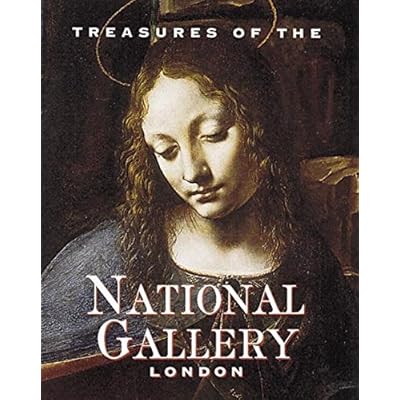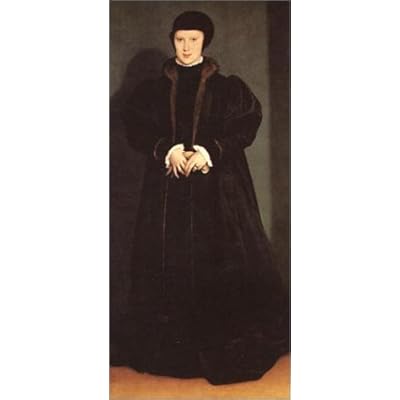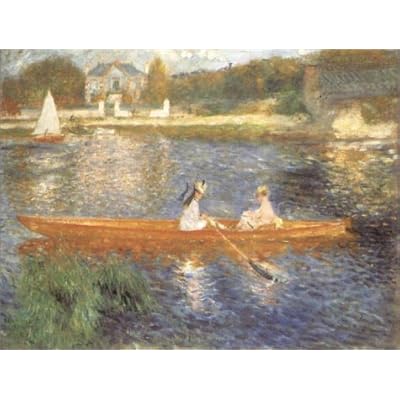Treasures of the National Gallery, London (Tiny Folios)
Category: Books,Arts & Photography,Architecture
Treasures of the National Gallery, London (Tiny Folios) Details
About the Author Erika Langmuir was formerly Head of Education at the National Gallery under then gallery director, Neil MacGregor. She taught at the University of Sussex and was professor of art history at the Open University. She is the author of the National Gallery Companion Guide. Read more Excerpt. © Reprinted by permission. All rights reserved. Excerpt from: Treasures of The National Gallery, London Introduction The National Gallery, London, is small compared with other great European museums such as the Louvre, the Prado, and the Hermitage. It houses just over two thousand paintings, and—with the exception of a handful of objects bequeathed or borrowed for comparison or ornament—no works in other media. The Gallery's name sometimes confuses foreign visitors. It is not the national collection of British art, which can be found at the Tate Gallery on Millbank, London, but contains masterpieces from every school of western European painting, ranging in date from the mid-thirteenth century to the early decades of our own. All of the works in the collection are usually on view in the galleries. Founded in 1824, a latecomer among European public collections, the National Gallery also differs from them by being based neither on a princely collection nor on the trophies of conquest. (The extensive Royal Collection, reflecting the taste of many outstanding royal patrons, is owned by the Crown and housed in the various royal palaces.) The National Gallery is not a state-run institution but an idiosyncratic mix of public and private funding, governed by a board of trustees whose members are appointed by the prime minister from a list drawn up by the board, who elect their own chairman. The Gallery was established by an Act of Parliament with the purchase (funded by Austria's unexpected repayment of a war debt) of the private collection of John Julius Angerstein (1735-1823), a self-made financier, philanthropist, and collector born in Saint Petersburg. The majestic altarpiece by Sebastiano del Piombo, The Raising of Lazarus (page 108), now National Gallery Accession Number 1, was one of the outstanding works in this collection. Among the people who had argued in favour of establishing a National Gallery were some who hoped that it would lead to a radical improvement in British painting and the flowering of a great national school; since 1768 artists had been able to obtain training at the Royal Academy but had no Old Master pictures to emulate. The majority of the advocates of a public gallery, however, thought that the aim was above all to provide the pleasure of pictures—"an ennobling enjoyment"—for those who could not themselves afford to own great paintings. The National Gallery was to be the private gallery of every person in the country, and all were to be encouraged to visit as often as they chose. Thus the Gallery's enduring policies of acquiring works of the highest quality and of admitting the public free of charge, as well as its vision of itself as an educational institution in the broadest sense of the word, all date from its inception. Few, if any, European national collections have so high a proportion of their own citizens among their visitors, and none so many who come to look at their pictures on the way home or in a spare half hour, who attend lunchtime lectures every weekday or enroll in every study day. Even during the Second World War, when the pictures were removed for safekeeping to slate mines in Wales, popular demand obtained the return each month of one painting, the "Picture of the Month." Many grateful letters in the Gallery's archive testify to the success of this scheme in providing spiritual nourishment to men and women on leave from the armed forces and to civilians, in a city subjected to nightly bombing raids. To Angerstein's pictures at the newly founded National Gallery (still housed, in 1824, in what had been his private residence, 100 Pall Mall) were added the paintings of Sir George Beaumont—John Constable's patron and one of the chief proponents of a national gallery. In 1823 Beaumont had promised his own collection to the nation, provided a suitable building could be found for the works proper display and conservation. Peter Paul Rubens's Autumn Landscape with a View of Het Steen in the Early Morning (page 165) came from his collection and is the direct inspiration for Constable's famous summertime idyll of rural Suffolk, The Hay-Wain (page 249), one of the "six-footers" on which the painter laboured during the long London winters. Exhibited in Paris in 1824, this picture in turn influenced French landscape artists; among them was Camille Corot, several of whose small studies, painted outdoors directly from the motif, are now assembled in the Gallery. Never exhibited in Corot's lifetime but sought after by other artists following his death, these works too proved influential on later generations of painters—not least being the Impressionists (many of whose works were donated to the Gallery by the twentieth-century textile magnate Samuel Courtauld). Beaumont's generous gift was matched soon afterwards by the Reverend Holwell Carr, who pledged his pictures to the Gallery on the same conditions. His bequest includes, among others, Rembrandt's hauntingly beautiful Woman Bathing in a Stream (page 181)—one of a score of pictures by the Dutch master now admired in the Gallery by the five million or so visitors who come every year. Frank Auerbach, whose drawings and paintings after works by Rubens and Rembrandt were exhibited at the Gallery in 1995, is just one of the contemporary painters who find inspiration in the collection, affirming its continuing relevance and confirming the ideals of the Gallery's founders and its many benefactors. In 1838 the National Gallery finally moved into purpose-built premises on Trafalgar Square, "the gangway of London," a location accessible to the greatest number of Londoners and chosen for this reason, in preference to more salubrious sites. For the next thirty years the Gallery had to share William Wilkins's much-criticised building (not yet the "much-loved friend" it became in the 1980s) with the Royal Academy. By bequest, gift, and purchase the collection continued to grow rapidly, necessitating the enlargements of the 1870s by E. M. Barry, which comprise the whole of the block lying behind the east half of the original building. Barry's additions have just been restored to their original Victorian splendour, well suited to the eighteenth- and nineteenth-century pictures housed there. More galleries were added to the north of the portico in 1887; in 1911 the building was extended westwards. Rooms were added and courtyards roofed in the late 1920s, early 1930s, and in 1961. The North Galleries, providing an additional entrance from Orange Street, were completed in 1975 and will undergo remodeling in the near future. The Sainsbury Wing—built through private donation and designed by the American architect Robert Venturi to house the earliest and most fragile paintings in the collection under optimal lighting and climatic conditions-was inaugurated in 1991, on the site of a bombed—out furniture store to the west of the main Gallery complex. In addition to the paintings on the upper (or main) floor, the wing contains a suite of galleries for temporary exhibitions, a theatre for lectures and events, and the Micro Gallery, an innovative computer information room for use by the general public. The history of the ways the collection has been displayed vividly reflects changes in taste and in the philosophical underpinnings of art history and museum design in England and beyond. Until 1991 the pictures were hung mainly by national and local "schools." A guidebook of 1908 describes a school as "a group of artists working under the influence of a leader—a painter who has brought some new view of art into the world." But the concept has also been defined according to notions of "national character"—notions that are usually anachronistic, for the map of Europe in earlier centuries did not correspond to the nation-state divisions of modern Europe. Since 1991 the pictures on the main floor have been hung chronologically in four wings: Painting from 1260 to 1510 in the Sainsbury Wing; Painting from 1510 to 1600 in the West Wing; Painting from 1600 to 1700 in the North Wing; and Painting from 1700 to 1900 in the East Wing, divisions corresponding to the four chapters of this book. In 1997 the National Gallery acquired loans from the Tate of important works dating from before 1900, by Paul Cézanne, Edgar Degas, Paul Gauguin, Vincent van Gogh, and Claude Monet. Pictures painted after that year—mainly by Henri Matisse, Pablo Picasso, Odilon Redon, Pierre-Auguste Renoir, and Edouard Vuillard—were ceded on loan to the Tate. The public also has access to the more densely hung lower floor in the main building, which houses the less significant works in the collection. (There is a fairly continuous traffic of pictures between the main and lower floors as loans are made to other institutions, reputations rise and fall, attributions change, and the qualities of paintings are revealed through cleaning or restoration.) The great advantage of the main floors pioneering hang is that it reveals, perhaps for the first time in a gallery, the international character of European art and culture, as painters, pictures, patrons, ideas, and inventions travelled-faster than we sometimes imagine. It is this history of persistent tradition and recurrent innovation that the uniquely eclectic nature of the National Gallery collection enables us to trace, through some of the finest pictures ever painted. Read more

Reviews








